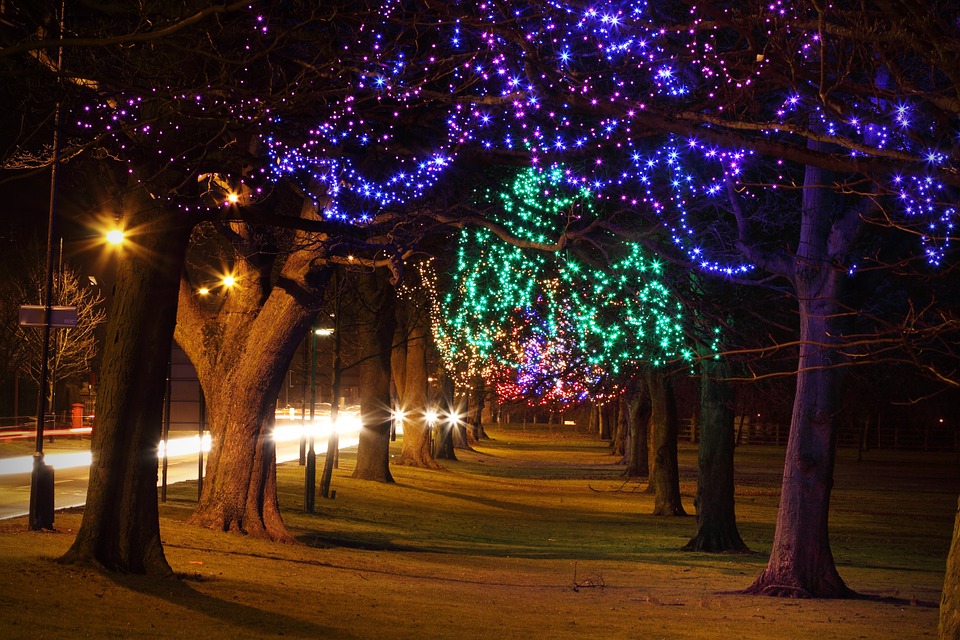Ever increasing day and night movement activities of mankind irrespective to their urban or rural base greatly need street lighting for their safe night movements all around. Electricity based street lighting facilities are an integral part of urban town planning but rural sector is of least concern in this respect. Presently, solar based street lighting systems are though providing some relief to rural masses but with their inherited disadvantages like cost & maintenance. Nanotechnology has shown the way to make trees glow when their leaves are implanted with nanoparticles to play the role of street lighting system.
Recently, Taiwanese researchers have come up with the elegant idea of replacing streetlights with trees, by implanting their leaves with gold nanoparticles. Implantation of leaves with gold nanoparticles causes the leaves to give off a red glow, lighting the road for passersby without the need for electric power. The natural chemical reactions in the tree itself with the addition of the gold particles creates a chemical reaction that produces bio-luminescence much like deep sea creatures that produce light from their own bodies in an area where there is none. A tree is a living organism and must be capable of similar processes with the help of the gold nanoparticles.
This ingenious triple threat of an idea could simultaneously reduce carbon emissions, cut electricity costs and reduce light pollution, without sacrificing the safety that streetlights bring. This discovery came about by accident when the researchers were trying to create lighting as efficient as LEDs without using the toxic, expensive phosphor powder that LEDs rely on. The gold nanoparticles, shaped like sea urchins, put into the leaves of Bacopa caroliniana plants cause chlorophyll to produce the reddish luminescence. In an added bonus, the luminescence will cause the leaves’ chloroplasts to photosynthesize, which will result in more carbon being captured from the air while the streets are lit. The next steps are to improve the efficiency of the bioluminescence and apply the technology to other biomolecules.
However, before the discovery can play a great role in giving glowing trees at desired locations as street lights there are a number of questions to be taken care off.
- To check the plucking of leaves from the trees.
- To answer the fall of leaves in the autumn (may be with genetically engineered trees to be bioliuminescent).
- Replacement to gold as gold is already a very precious metal
- To check the health of trees as if they actually give off enough light to see clearly by on the streets, that's a lot of energy, and it seems like it would be drawn from the tree's energy reserves, which could kill it.
- To make a comparison of the technique for its cost & maintenance with other existing street lighting techniques.
- It would be better to put the gold or other cheaper reflective material in the roads themselves, and sidewalks as leaves are seasonal.
- The particles will glow for a little while after the sun sets, but then artificial UV sources must be brought in, or the street will go dark. In the linked article, researchers stated that the nanoparticles produce fluorescence under ultraviolet light. If UV lights under every tree have to be set up then there will be no electricity savings compared to using regular lights.
- The idea of having to implant gold nano particles into the leaves sounds like an incredible waste of time and money and trying to engineer a tree that is bio-luminescent would be cheaper and easier.
- What about chances of heavy metal poisoning effects if those trees were ingested by birds, insects and animals and will it accumulate in food chain through time?
- How it might affect the trees themselves (as it's a foreign invasive object--just like implants or any other invaders in us make our bodies try to eject them).
- How is a red glow going to be safer than focused beam lighting on streets at night?
- Growing plants under UV lights without white light may be harmful to the plants.
- Plants use different light wavelengths to figure out when to produce different hormones so shading plants with certain colors can affect the way they grow.
Though, there are a number of objections to the discovery to be useful at its present level but there are number of possibilities for further development for its usefulness.
- Bioluminesence could be engineered into trees.
- These engineered trees could reduce energy usage in public lighting.
- These engineered trees could replace electric public lighting.
